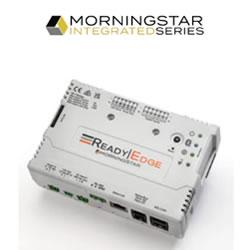MicroLink Devices Achieves Certified 37.75% Solar Cell Power Conversion Efficiency
The 37.75% efficiency is the highest reported for a triple junction ELO solar cell produced on a 6-inch GaAs substrate production platform. The specific power of this ELO solar cell design exceeds 3000 W/kg under 1-sun AM0 spectrum, which is the world's record in comparison to any other solar cell technology.
NILES, Ill., April 18, 2018 /PRNewswire/ -- MicroLink Devices, Inc. has achieved a 37.75% power conversion efficiency from a three-junction epitaxial lift-off (ELO) thin-film solar cell. The device performance was officially certified by the National Renewable Energy Laboratory (NREL) and tested under the industry standard air mass 1.5 global (AM1.5G) simulated 1-Sun solar spectrum. The 37.75% efficiency is the highest reported for a triple junction ELO solar cell produced on a 6-inch GaAs substrate production platform. The specific power of this ELO solar cell design exceeds 3000 W/kg under 1-sun AM0 spectrum, which is the world's record in comparison to any other solar cell technology. These solar cells are currently used to provide energy to the Zephyr HALE (High Altitude Long Endurance) platform produced by Airbus Defence and Space in Farnborough, UK. MicroLink has an exclusive licensing agreement with NREL for the inverted metamorphic multi-junction (IMM) technology used to manufacture the high-efficiency solar device.
MicroLink's proprietary ELO process makes it possible to peel off thin layers of active solar cell material that were deposited on a GaAs semiconductor substrate. The expensive GaAs substrate can also be reused multiple times to lower manufacturing costs. MicroLink's ELO technology development has been supported over the past decade by numerous US agencies including NASA, DARPA, the Air Force Research Laboratory, the Office of Naval Research, NAVAIR, Army Research Office, Army REF, CERDEC, ARPA-E, and the Department of Energy.
"We are continuing to push the limits of what can be achieved with the ELO technology," said Dr. Noren Pan, founder and president of MicroLink Devices. "Our triple-junction IMM ELO solar cells combine the highest efficiency with the lowest mass density of any solar cell technology available today. This represents a compelling solution for demanding unmanned aerial vehicle and satellite applications."
More details about the record ELO cell performance will be presented at the upcoming Space Power Workshop in Los Angeles (April 23-27) and IEEE Photovoltaics Specialists Conference in Waikoloa, HI (June 10-15).
About MicroLink Devices:
Established in 2000, MicroLink Devices is located in Niles, IL and specializes in the design, epitaxial growth and fabrication of compound semiconductor devices including heterojunction bipolar transistors (HBTs), solar cells, lasers and photodetectors. In recent years, MicroLink has ramped up the production of its ELO-based solar cells and sheets for use in mobile power, unmanned aerial vehicle (UAV), and traditional satellite applications.
Featured Product

